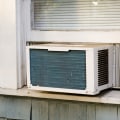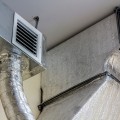When replacing an air conditioner or heat pump, it is highly recommended to use a new set of pipes. However, this is not always necessary if the existing set of lines is accessible. In cases where the lines were installed on walls during new construction or rebuilt during a remodel, replacing them can be quite difficult. Copper refrigerant lines are used to move the refrigerant between the condenser and the evaporator.
Coolant lines are usually arranged in pairs, with the larger diameter line carrying gas and the smaller one carrying liquid. This article discusses the requirements for refrigeration pipes, insulation, mechanical fastening, and allowable distances, as well as errors in air conditioning refrigerant line installations that can cause refrigerant leaks or equipment malfunction in the future. For instance, measuring the pressure drop (or temperature change) of the refrigerant gas line in the suction line (back to the compressor) will usually show that a temperature loss of 4 degrees across the refrigerant line will result in an 8 percent loss in system cooling capacity. Additionally, this heat exchange helps to raise the temperature of the refrigerant entering the compressor, making it easier for it to compress and increasing the temperature of the refrigerant on the condenser side so that it can better transfer heat to the ambient air around the condensing coil. According to an article on air conditioner refrigerant line installation requirements, 26% of refrigerant line defects are due to improper installation.
For example, if they were glued to the bottom of plywood and entered the house from outside without any barriers or metal covers. The installer must take into account several factors when determining the size in diameter of the suction and refrigerant supply pipes such as distances involved, tonnage of equipment, elevation changes between compressor and evaporator coil, number and type of accessories in piping system, operating ambient temperature ranges, and other cooling equipment specifications provided by manufacturer. The coolant pipes must be installed in such a way as to avoid deformations and stresses that exceed their structural strength. After replacing my air conditioning unit, I have some doubts since I see that much of the same material is found in carpets, furniture, bed linen, etc. However, it is important to note that exposed part of a set of lines represents a very small percentage of total line and does not significantly affect system efficiency.
Although it is unlikely, who wants to risk shortening their heat pump or air conditioner's lifespan?When replacing an air conditioner or heat pump system, it is essential to use new copper refrigerant lines. This will ensure that your system runs efficiently and safely for years to come. The installer must take into account several factors when determining the size in diameter of the suction and refrigerant supply pipes such as distances involved, tonnage of equipment, elevation changes between compressor and evaporator coil, number and type of accessories in piping system, operating ambient temperature ranges, and other cooling equipment specifications provided by manufacturer. Additionally, proper insulation should be used to prevent heat loss from your system.
Lastly, mechanical fastening should be used to secure all connections. In conclusion, when replacing an air conditioner or heat pump system it is important to use new copper refrigerant lines for optimal performance. The installer must take into account several factors when determining pipe size such as distances involved, tonnage of equipment, elevation changes between compressor and evaporator coil, number and type of accessories in piping system, operating ambient temperature ranges, and other cooling equipment specifications provided by manufacturer. Additionally, proper insulation should be used to prevent heat loss from your system and mechanical fastening should be used to secure all connections.


